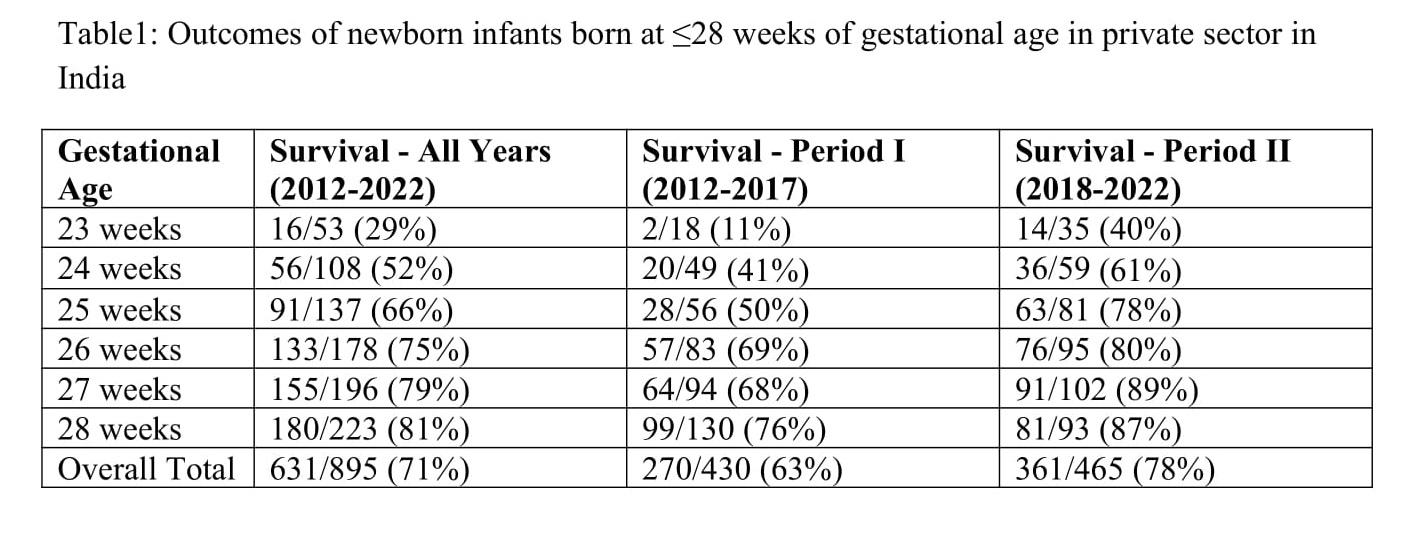Neonatology
Session: Neonatal General 2: NICU Care Strategies
73 - Improving survival rates of newborn infants born at ≤28 weeks of gestational age in private sector in India
Friday, May 3, 2024
5:15 PM - 7:15 PM ET
Poster Number: 73
Publication Number: 73.618
Publication Number: 73.618

NANDKISHOR S. KABRA, DM, MD, DNB, MSc (he/him/his)
Director NICU
Surya Hospitals
MUMBAI, Maharashtra, India
Presenting Author(s)
Background: Traditionally, survival rates of extremely premature infants in LMICs like India have remained lower. However, in recent years, there has been a steady improvement.
Objective: To describe the survival rates of newborn infants born at ≤28 weeks of gestational age in a cohort of babies admitted at a tertiary care center in the private sector in Western India.
Design/Methods: Prospective descriptive cohort study. From 1st January 2012 to 31st December 2022, 12 years duration, 895 newborn infants with a gestational age at birth ≤28 weeks were admitted to our NICU. Data was abstracted from the prospectively maintained electronic database with standardized definitions and data collection tools.
Results: Survival rates of extremely premature newborn infants born between 2012-2022 are summarized in Table 1. Over the two comparison periods of 2012 to 2017 versus 2018-2022, survival rates at each gestational age have improved. Overall over the 12 years (2012-2022), the survival rate of these infants was 631/895 (71%). In the initial 6-year period (2012-2017), the survival rate was 270/430 (63%). It has improved in the next 5-year period (2018-2022) to 361/465 (78%).
A detailed analysis suggests that the outcomes of extremely premature babies admitted at our Hospital have improved because of the following reasons
1. Before delivery: Transfer of mother to a center where mother and baby both can be looked after (in-utero transfer), use of the antenatal steroid to facilitate fetal lung maturation, antenatal use of magnesium sulfate for fetal neuroprotection, and counseling of parents prior to delivery.
2. During Delivery: having a trained neonatal team available to attend the delivery
3. After delivery: delayed cord clamping, thermoregulation, use of delivery room CPAP
4. During transport: maintaining asepsis and temperature regulation
5. After admission in NICU: adequate nursing-to-patient ratio, 24*7*365 availability of doctors in NICU, strict infection control practices, and use of human milk from the milk bank.
Conclusion(s): Over the years, survival rates of extremely premature infants born in LMICs like India have significantly improved. Private sector hospital with adequate infrastructure and manpower it is closely approaching the data of high-income countries. This is also true for infants born at limits of viability of 23 to 25 weeks.

